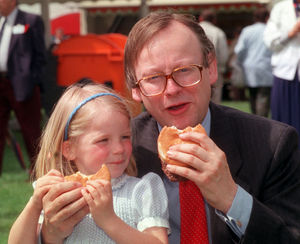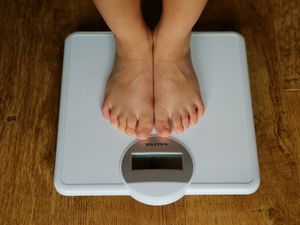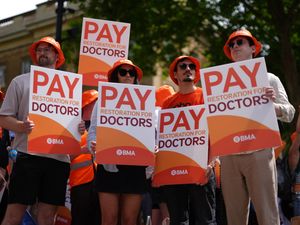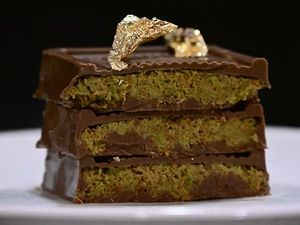The day the beef war broke out
The tabloids portrayed it as a re-run of the Battle of Waterloo.

The British Government embraced the spirit of Churchill by trying to get a cabinet minister's infant daughter to eat a hamburger on television. And a Home Guard army of Sun readers took the battle to the foe across the channel with giant cow's head posters and beefeater car stickers. And it was a war that would run for 16 long years.
It is 30 years tomorrow since the French Government imposed a ban on British beef imports, marking the opening salvo in a trade war which probably laid the foundations for Brexit, even though there was no such thing as the European Union back in 1990.
Britain's favourite Sunday dinner became a diplomatic battleground. A high-profile West Midland MP demonstrated his muscular patriotism by tucking into a steak sandwich. For a while, it seemed as though everyone had a beef about beef.
Britain's beef wars with the rest of Europe began in quite a low-key way. Throughout the 1980s, the sight of sulky French farmers setting fire to British meat imports had become something of a national sport, as much part of the summer season as deely boppers and Timmy Mallet, so it didn't come as a huge surprise that our Gallic cousins would be at the forefront of any revolt.
But while the chauvinistic posturing made for great headlines in the tabloids, there was a very serious side to the controversy. It later emerged that 177 people had died as a result of eating beef contaminated with bovine spongiform encephalopathy, or BSE.
Back in the 1980s, it was commonplace to feed cattle with a high-protein feed supplement called meat-and-bone meal (MBM), that contained the remains of other animals. This sometimes included the remains of cattle who had spontaneously developed the disease, as well as sheep infected with scrapie, a similar disease in sheep, and the inclusion of brain and spinal cord tissue in MBM increased the likelihood of animals being infected.
The first confirmed case of an animal falling ill with BSE came in 1986, and in November the following year the Ministry of Agriculture accepted it had a new disease on its hands. In 1989, high-risk foodstuffs such as offal were banned for human consumption and widespread fear about beef led many British consumers to stop purchasing it.
The disease quickly became known as 'Mad Cow Disease'. But despite these concerns, the Government insisted the disease was confined entirely to cattle, and could not spread to humans. That all changed on May 10, 1990, when it was widely reported that a Siamese cat called Max had been infected with the disease, and fears started to grow.
To reassure the public, Agriculture Secretary John Gummer appeared six days later at a boat show in his constituency, tucking into a burger with four-year-old daughter Cordelia. While the youngster was reluctant to play ball, Gummer himself took a hefty bite, and declared it to be 'absolutely delicious'. It was an image that would haunt him for the rest of his career.
The French ban on British beef imports in on May 29 was a huge blow to the farming industry. France was the world's biggest importer of British beef, buying 71,000 tons in 1989, accounting for 45 per cent of all exports and worth £183 billion to British farmers.
Demand
French agriculture minister Henri Nallet probably stoked up the tensions when he admitted that the ban was not based on any new scientific evidence, but because of the effect the bad publicity was having on sales of French beef.
"It is to stop a panic from taking place," he said, "so people in France can eat beef without worry."
The European Community, the forerunner of the EU, ordered France to reverse the ban, but a few days later, West Germany followed suit – reportedly annoyed that meat being turned away from France was being sent across the Rhine instead Italy and Luxembourg also introduced bans. Belgium stopped short of an outright ban, but its government told people not to buy it, which had more or less the same effect.
The Sun responded in its own inimitable fashion, with the headline ''Shop Off You Selfish Frogs."
The tabloid added: ''Given the chance the French do not knife a friend or neighbour in the back. Not if they can use a pitchfork."
The normally staid Independent also jumped on the bandwagon, saying the measures were strange coming from a country famed ''for its typhus-infected water, rabid domestic animals and horse-meat steaks.'' The newspaper's front page featured a cartoon of two Frenchmen with berets, standing in front of a horse. One said to the other, ''Why import poisoned English beef when we have good French beef?''
Britain's chief medical officer, Sir Donald Acheson, insisted: "Beef can be eaten safely by everyone, both adults and children, including patients in hospital." The European Community pledged its support to Britain, offering to buy 20,600 tons of British beef to help Britain's beleaguered cattle industry.
But French farmers accused Britain of 'dumping' cut-price beef on its consumers, because of falling confidence and demand at home.
After fierce negotiation in Brussels the bans were lifted in return for tough health controls on British beef exports, but the problem had not gone away.
By 1992, it was reported that three cows in every 1,000 had BSE, but the real concerns came at the end of 1994 when a number of people began to show symptoms of a variant of Creutzfeldt–Jakob disease (CJD), a fatal neurological disorder that normally occurred in older people. The new variant, or vCJD as it became known, was occurring primarily in younger people who had eaten BSE-infected meat.
The first known death from vCJD was 19-year-old Stephen Churchill, who died in May, 1995, but in September 1995 a government investigation concluded there was 'insufficient evidence' to link BSE and vCJD.
Needless
On March 20, 1996, the Government did a U-turn when Health Secretary Stephen Dorrell said that vCJD was caused by eating BSE-infected meat.
The European Union acted swiftly, imposing a worldwide ban on British beef exports. Cue more tabloid anger, with the Government pointing out that new regulations imposed on beef farmers were more stringent than anywhere else in the EU.
The Sun offered "I'm backing British Beef" car stickers to its readers, featuring an image of then PM John Major dressed up as a beefeater, and also handed out huge posters featuring a cow's head urging steak fans to buy British.
Cue Warren Hawksley, the outspoken MP for Halesowen and Stourbridge (and previously The Wrekin) to launch his full-throttle defence of British beef.
"I've just had a lovely steak sandwich in Oldswinford, and I don't feel mad at all," he declared.
"I will go on eating it because British beef is the best in Europe. We have the highest hygiene and I am proud to eat it."
Mr Hawksley, who ran an hotel in Wales with his wife, said they were selling as much British beef as ever. He said he had seen first-hand how restaurants in France were ignoring EU legislation, dismissing BSE as 'the staggers' and taking no notice.
He said he had visited many butchers in Stourbridge and Lye, who had told him they were concerned that the scare was affecting beef sales, and leading to a 25 per cent increase in the price of lamb and chicken.
The EU relaxed most of the restrictions in 1999, although France unilaterally continued with the ban until 2002, when it finally caved in to the threat of huge fines. Germany also continued with the ban until 2000. The ban on live cattle exports remained in place until 2006.
So was the beef war the result of genuine concern about public safety, or a bit of straightforward commercial opportunism? In truth, probably a bit of both.
There is little doubt that the Government was slow to spot the dangers of BSE, and with hindsight the feeding of cattle with contaminated food led to 177 needless deaths.
However, it is also hard to dispute that the ban remained in place many years after measures had been taken to eradicate the problem, meaning that by this time Britain could justifiably claim to have the safest beef in the world.




